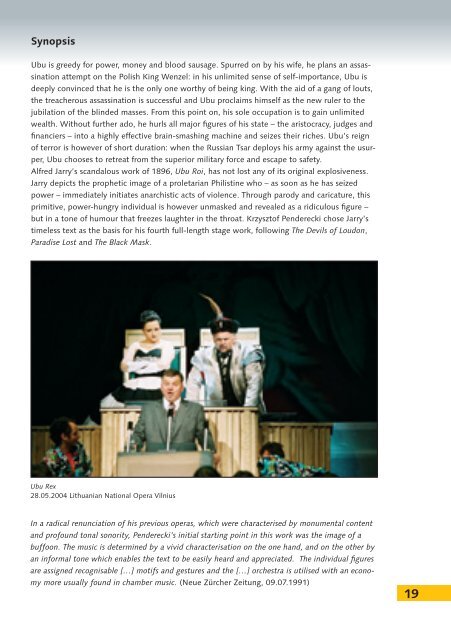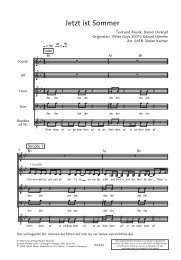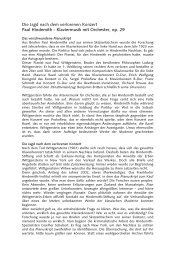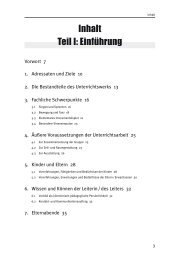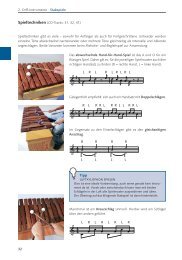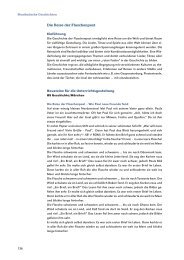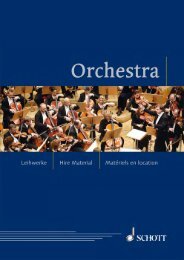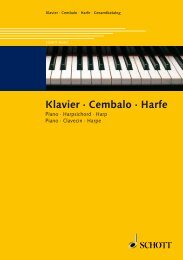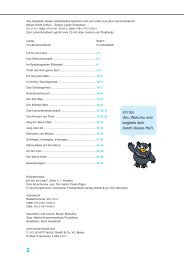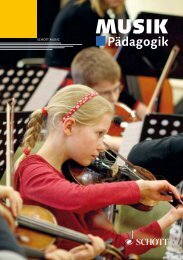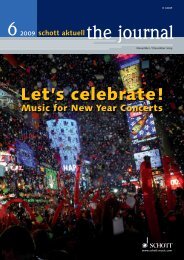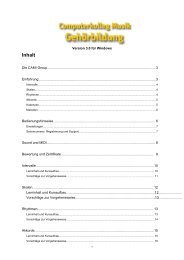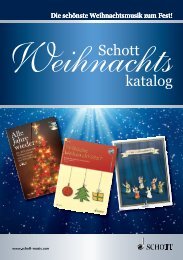Music Theatre since 1990 - Schott Music
Music Theatre since 1990 - Schott Music
Music Theatre since 1990 - Schott Music
You also want an ePaper? Increase the reach of your titles
YUMPU automatically turns print PDFs into web optimized ePapers that Google loves.
Synopsis<br />
Ubu is greedy for power, money and blood sausage. Spurred on by his wife, he plans an assassination<br />
attempt on the Polish King Wenzel: in his unlimited sense of self-importance, Ubu is<br />
deeply convinced that he is the only one worthy of being king. With the aid of a gang of louts,<br />
the treacherous assassination is successful and Ubu proclaims himself as the new ruler to the<br />
jubilation of the blinded masses. From this point on, his sole occupation is to gain unlimited<br />
wealth. Without further ado, he hurls all major figures of his state – the aristocracy, judges and<br />
financiers – into a highly effective brain-smashing machine and seizes their riches. Ubu’s reign<br />
of terror is however of short duration: when the Russian Tsar deploys his army against the usurper,<br />
Ubu chooses to retreat from the superior military force and escape to safety.<br />
Alfred Jarry’s scandalous work of 1896, Ubu Roi, has not lost any of its original explosiveness.<br />
Jarry depicts the prophetic image of a proletarian Philistine who – as soon as he has seized<br />
power – immediately initiates anarchistic acts of violence. Through parody and caricature, this<br />
primitive, power-hungry individual is however unmasked and revealed as a ridiculous figure –<br />
but in a tone of humour that freezes laughter in the throat. Krzysztof Penderecki chose Jarry’s<br />
timeless text as the basis for his fourth full-length stage work, following The Devils of Loudon,<br />
Paradise Lost and The Black Mask.<br />
Ubu Rex<br />
28.05.2004 Lithuanian National Opera Vilnius<br />
In a radical renunciation of his previous operas, which were characterised by monumental content<br />
and profound tonal sonority, Penderecki’s initial starting point in this work was the image of a<br />
buffoon. The music is determined by a vivid characterisation on the one hand, and on the other by<br />
an informal tone which enables the text to be easily heard and appreciated. The individual figures<br />
are assigned recognisable […] motifs and gestures and the […] orchestra is utilised with an economy<br />
more usually found in chamber music. (Neue Zürcher Zeitung, 09.07.1991)<br />
19


